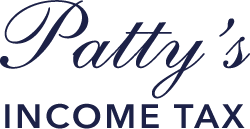Who is Self-Employed?
Generally, you are self-employed if any of the following apply to you.
- You carry on a trade or business as a sole proprietor or an independent contractor.
- You are a member of a partnership that carries on a trade or business.
- You are otherwise in business for yourself (including a part-time business)
What are My Self-Employed Tax Obligations?
As a self-employed individual, generally you are required to file an annual return and pay estimated tax quarterly.
Self-employed individuals generally must pay self-employment tax (SE tax) as well as income tax. SE tax is a Social Security and Medicare tax primarily for individuals who work for themselves. It is similar to the Social Security and Medicare taxes withheld from the pay of most wage earners. In general, anytime the wording “self-employment tax” is used, it only refers to Social Security and Medicare taxes and not any other tax (like income tax).
Before you can determine if you are subject to self-employment tax and income tax, you must figure your net profit or net loss from your business. You do this by subtracting your business expenses from your business income. If your expenses are less than your income, the difference is net profit and becomes part of your income on page 1 of Form 1040. If your expenses are more than your income, the difference is a net loss. You usually can deduct your loss from gross income on page 1 of Form 1040. But in some situations your loss is limited. See Pub. 334, Tax Guide for Small Business (For Individuals Who Use Schedule C or C-EZ) for more information.
You have to file an income tax return if your net earnings from self-employment were $400 or more. If your net earnings from self-employment were less than $400, you still have to file an income tax return if you meet any other filing requirement listed in the Form 1040 instructions (PDF).
How Do I Make My Quarterly Payments?
Estimated tax is the method used to pay Social Security and Medicare taxes and income tax, because you do not have an employer withholding these taxes for you. Form 1040-ES, Estimated Tax for Individuals (PDF), is used to figure these taxes. Form 1040-ES contains a worksheet that is similar to Form 1040. You will need your prior year’s annual tax return in order to fill out Form 1040-ES.
Use the worksheet found in Form 1040-ES, Estimated Tax for Individuals to find out if you are required to file quarterly estimated tax.
Form 1040-ES also contains blank vouchers you can use when you mail your estimated tax payments or you may make your payments using the Electronic Federal Tax Payment System (EFTPS). If this is your first year being self-employed, you will need to estimate the amount of income you expect to earn for the year. If you estimated your earnings too high, simply complete another Form 1040-ES worksheet to refigure your estimated tax for the next quarter. If you estimated your earnings too low, again complete another Form 1040-ES worksheet to recalculate your estimated taxes for the next quarter.
See the Estimated Taxes page for more information. The Self-Employment Tax page has more information on Social Security and Medicare taxes.
How Do I File My Annual Return?
To file your annual tax return, you will need to use Schedule C (PDF) or Schedule C-EZ (PDF) to report your income or loss from a business you operated or a profession you practiced as a sole proprietor. Schedule C Instructions (PDF) may be helpful in filling out this form.
Small businesses and statutory employees with expenses of $5,000 or less may be able to file Schedule C-EZ instead of Schedule C. To find out if you can use Schedule C-EZ, see the instructions in the Schedule C-EZ form.
In order to report your Social Security and Medicare taxes, you must file Schedule SE (Form 1040), Self-Employment Tax (PDF). Use the income or loss calculated on Schedule C or Schedule C-EZ to calculate the amount of Social Security and Medicare taxes you should have paid during the year. The Instructions (PDF) for Schedule SE may be helpful in filing out the form.
Am I Required to File an Information Return?
If you made or received a payment as a small business or self-employed (individual), you are most likely required to file an information return to the IRS.
Home Office Deduction
If you use part of your home for business, you may be able to deduct expenses for the business use of your home. The home office deduction is available for homeowners and renters, and applies to all types of homes.
Married Couples Business – What is a Qualified Joint Venture?
Married Couples Business
The employment tax requirements for family employees may vary from those that apply to other employees. On this page we point out some issues to consider when operating a married couples business.
Election for Married Couples Unincorporated Businesses
For tax years beginning after December 31, 2006, the Small Business and Work Opportunity Tax Act of 2007 (Public Law 110-28) provides that a “qualified joint venture,” whose only members are a married couples filing a joint return, can elect not to be treated as a partnership for Federal tax purposes.
Contact Us To Get The Most Back
Business taxes get tricky. Make sure you are getting the most out of your return today by contact us today.
